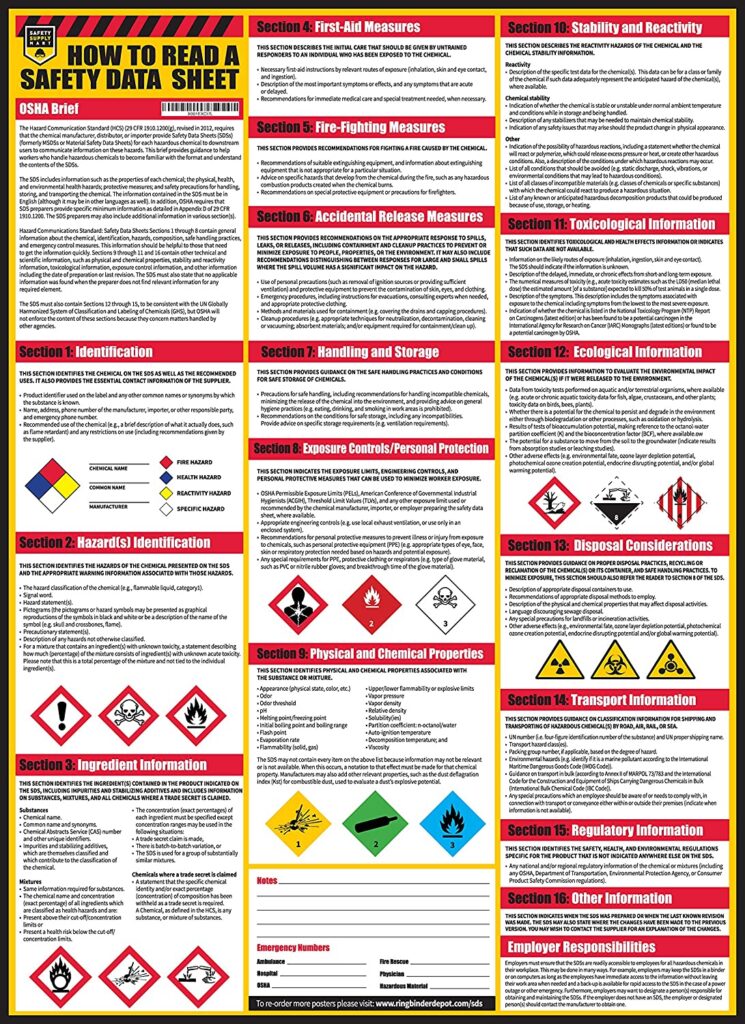- Workers should always be familiar with the hazards of the products they are handling.
- Safety Data Sheets (SDS) provide information on identification, hazards, prevention, and response for hazardous products.
- When using an SDS, workers should ensure they are reading the SDS for the exact product they are using.
- Workers should pay attention to Section 1 (typical use of the product and any restrictions), Section 2 (hazards and precautions), and Section 7 (safe handling and storage instructions).
- Sections 4, 5, and 6 provide information on what to do in an emergency.
- Workers should follow the advice on the SDS and consult their supervisor or a safety professional if needed.
- Using SDS can help ensure the safety of workers and those around them.
As a worker, your safety should be a top priority, and this includes being aware of the hazards of the products you are handling. One tool that can help you understand the hazards and safety procedures for a product is the Safety Data Sheet (SDS). An SDS is a document that provides information about a hazardous chemical, including its potential hazards, safe handling instructions, and emergency procedures.
When should you use an SDS sheet?
The short answer is always. Before you start using a hazardous product, you should always be familiar with its hazards and safety procedures. This is where an SDS can be very helpful. It provides a wealth of information on the product, including identification, hazards, prevention, and response.
When reading an SDS, there are a few key things to keep in mind. First, make sure that you are looking at the SDS for the exact product you are using. Check the name on the container against the name on the SDS to ensure that you are reading the correct document. Next, pay attention to Section 1, which describes the typical use of the product and may indicate any restrictions. Make sure that you are using the product in the way the manufacturer intended, as this will impact the advice provided on the SDS and label.
Section 2 SDS Sheet
Section 2 of the SDS is where you will find information on the hazards of the product. This section will summarize the hazards related to the product, precautions to take, and what to do in an emergency. It is important to understand that the SDS covers information about the potential hazards, but may not be specific about the required safe work procedures needed for your workplace. For example, the SDS may not specify what type of respirator must be used, just that a respirator is needed. In these cases, it is important to ask your supervisor or a safety professional for guidance.
Section 7 SDS Sheet
Section 7 of the SDS provides information on safe handling and storage instructions for the product. This section will outline any special handling requirements, such as the need for personal protective equipment or proper ventilation. It will also provide guidance on how to store the product safely to prevent accidents.
Sections 4, 5, and 6 SDS Sheet
Sections 4, 5, and 6 of the SDS provide information on what to do in an emergency. This may include first-aid procedures, firefighting measures, and procedures for dealing with accidental releases. It is important to be familiar with this information in case an emergency situation arises.
SDS sheets are a tool
SDS is a valuable tool for workers who handle hazardous products. Always be familiar with the hazards of a product before you start using it. You should look at an SDS, match the name of the product on the container to the one on the SDS, know the hazards, understand safe handling and storage instructions, as well as understand what to do in an emergency. By following these guidelines, you can help ensure your safety and the safety of those around you.





